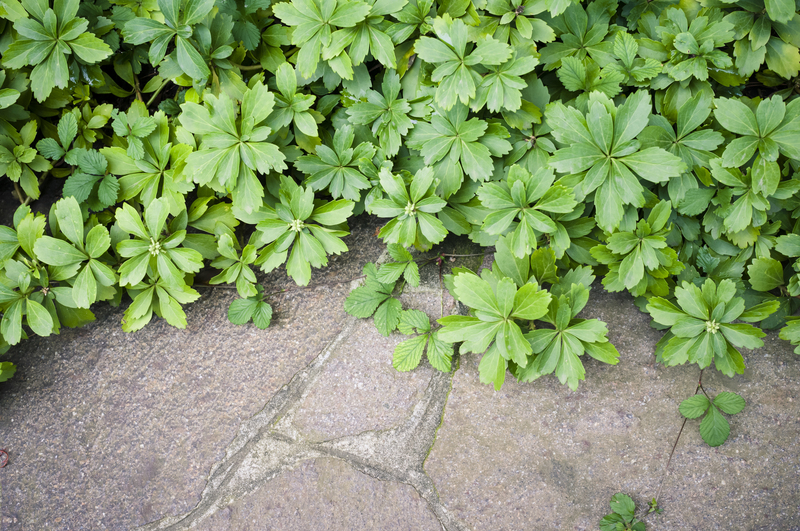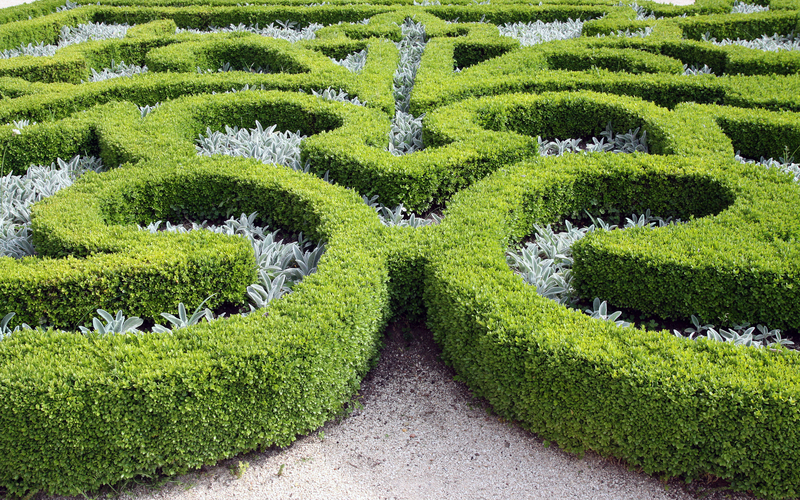The Essentials of Container Gardening: A Guide for Beginners
Posted on 23/08/2025
The Essentials of Container Gardening: A Guide for Beginners
Container gardening has quickly become one of the most popular and versatile ways to grow plants, vegetables, herbs, and flowers, regardless of available space. Whether you live in an apartment, have a small balcony, or simply want to add some greenery to your patio, container gardens offer a practical solution for urban dwellers and homeowners alike. In this comprehensive beginner's guide, we will explore everything you need to know about container gardening essentials--from choosing containers and soil, to plant selection, watering, maintenance, and troubleshooting common issues.
Why Choose Container Gardening?
- Space Efficiency: Perfect for small spaces, patios, balconies, rooftops, and even windowsills.
- Portability: Easily move your plants to take advantage of sunlight, shelter from harsh weather, or redesign your space.
- Versatility: Grow a variety of plants not possible in traditional gardens, including exotic plants that require special conditions.
- Accessibility: Reduce bending and kneeling, making gardening easier for seniors or people with limited mobility.
- Pest Control: Containers offer more control over pests, soil quality, and drainage.
Whether your goal is to cultivate a kitchen herb garden, a vibrant flower display, or to harvest homegrown vegetables, mastering the basics of container gardening unlocks a world of possibilities for any beginner gardener.

Getting Started: The Basics of Container Gardening
Choosing the Right Containers
One of the first steps is selecting the best containers for your plants. The variety is almost endless--clay pots, plastic planters, metal tins, wooden boxes, hanging baskets, and even repurposed items like buckets or barrels. When selecting containers, consider these factors:
- Size: The pot should be spacious enough for roots to grow. A container that's too small will limit growth and dry out quickly.
- Drainage: Well-draining containers are essential. Ensure pots have holes at the bottom to allow excess water to escape, preventing root rot.
- Material:
- Clay/Terracotta: Porous, providing good air and water movement, but can dry out quickly.
- Plastic: Lightweight and retains moisture longer, but may heat up in direct sun.
- Wood: Natural and decorative, but may decay over time.
- Metal: Stylish, but can become very hot and damage roots unless lined.
- Appearance: Choose styles and colors that complement your space and suit your taste.
Tip: A deeper pot is ideal for root vegetables, while shallow containers suit herbs and leafy greens.
Understanding Potting Mix and Soil Needs
Unlike in-ground gardening, standard garden soil isn't suitable for container gardening because it compacts easily and may contain pests or diseases. Instead, use a quality potting mix that is lightweight, retains moisture, provides nutrients, and promotes proper drainage.
- Pre-mixed Potting Soil: Readily available and formulated for containers. Many blends contain added fertilizers and moisture-absorbing crystals.
- DIY Potting Mix: Combine peat moss or coconut coir, perlite for drainage, and compost for nutrients. This gives you control over ingredients and quality.
- Specialty Mixes: For cacti, succulents, or orchids, use specialized mixes that meet their unique drainage needs.
Remember: Change or refresh your potting mix yearly to prevent disease buildup and renew nutrients for your plants.
Selecting Plants for Your Container Garden
Best Plants for Container Gardens
Almost any plant can thrive in a container with the right care, but some are better suited for new gardeners due to their adaptability and easy maintenance. Consider the following options:
Herbs:- Basil
- Mint (confined in pots)
- Parsley
- Chives
- Thyme
- Rosemary
- Cherry tomatoes
- Lettuce and salad greens
- Peppers
- Radishes
- Spinach
- Carrots (in deep containers)
- Petunias
- Geraniums
- Begonias
- Marigolds
- Pansies
- Calibrachoa
- Jade plant
- Aloe vera
- Echeveria
- Barrel cactus
- String of pearls
When choosing plants, group them according to their sunlight and moisture requirements for best results.
Planting Arrangements and Design Tips
With containers, you can experiment with creative arrangements. The classic "thriller, filler, and spiller" formula is ideal for creating balanced, eye-catching displays:
- Thriller: A tall, attention-grabbing plant for the center or back (e.g., ornamental grass, dracaena).
- Filler: Mid-height, bushy plants to fill the space (e.g., petunias, coleus).
- Spiller: Trailing or cascading plants to drape over the pot's edges (e.g., ivy, sweet potato vine).
Experiment with color, texture, and leaf shapes for visual interest. Use odd numbers of plants and vary container heights to add depth to your container garden arrangements.
Caring for Your Container Plants: Watering, Feeding, and Light
Proper Watering Techniques for Container Gardens
Containers dry out much faster than in-ground gardens, so regular watering is key. Here are some expert tips:
- Check moisture: Insert a finger an inch below the surface. Water when it feels dry.
- Morning watering: Watering early in the day reduces evaporation loss and helps plants absorb moisture before the heat of midday.
- Deep watering: Ensure water reaches the roots. Water until it drains from the bottom of the pot.
- Avoid soggy soil: Overwatering leads to root rot. Use containers with drainage and never let pots sit in standing water.
Consider using self-watering containers or adding mulch on top to retain moisture.
Fertilizing Container Plants
Unlike garden beds, nutrients in pots are quickly depleted. Regularly fertilize your container garden for healthy, vigorous growth:
- Liquid fertilizer: Apply every 2-4 weeks during the growing season for most flowers and vegetables.
- Slow-release pellets: Mix into the soil at planting time for long-lasting nutrition.
- Organic options: Compost tea, fish emulsion, or seaweed extract are great natural fertilizers.
Always follow label instructions to prevent over-fertilizing, which can damage roots.
Light Requirements in Container Gardening
Sun exposure is critical for healthy container plants. Most flowering annuals and vegetables need 6-8 hours of direct sunlight each day. Shade-loving plants, like ferns and impatiens, thrive in partial or full shade. Assess your space carefully before choosing plants, and consider moving containers to optimize their light exposure throughout the seasons.
Troubleshooting Common Container Gardening Issues
Dealing with Pests and Diseases
While containers reduce some risks, pests and diseases can still affect your plants. Look for:
- Aphids: Tiny, soft-bodied insects; treat with insecticidal soap.
- Whiteflies: Small white insects; use neem oil or sticky traps.
- Powdery mildew: White coating on leaves; increase air circulation and use fungicides as needed.
- Root rot: Mushy roots from overwatering; always ensure drainage.
Inspect plants regularly, remove affected leaves, and isolate sick plants to prevent spread.
Solving Common Growth Problems
- Yellowing leaves: Often due to overwatering, poor drainage, or lack of nutrients.
- Leggy growth: Insufficient light, overcrowding, or old potting mix.
- Plants not flowering: Lack of sunlight, phosphorus deficiency, or incorrect pruning.
Address each issue promptly, adjust care routines, and repot plants if needed.
Seasonal Tips: Thriving Year-Round with Containers
Spring and Summer
- Monitor watering daily; pots dry out quickly as temperatures rise.
- Feed regularly; fast growth consumes soil nutrients fast.
- Prune and deadhead; remove spent blooms to encourage more flowers.
Fall and Winter Container Care
- Bring tender plants indoors before the first frost.
- Switch to winter-hardy plants such as pansies, ornamental kale, or evergreen shrubs for cold-season interest.
- Reduce watering frequency; plants grow more slowly in cooler months.
- Insulate pots or move them to sheltered areas to prevent root freeze.
Expanding Your Skills: Creative Ideas for Container Gardening
- Vertical Gardens: Stack planters or use wall-mounted pockets to maximize minimal space.
- Hanging Gardens: Suspend baskets from beams or balcony railings for a floating effect.
- Repurposed Containers: Use old boots, teapots, or crates for quirky, personalized displays.
- Edible Container Gardens: Grow mixed herb and vegetable planters near the kitchen for fresh harvest.

Frequently Asked Questions on Container Gardening for Beginners
How often should I water my container garden?
It depends on the plant type, container size, and weather. In hot weather, daily watering is often required. Always check soil moisture before adding water.
What are the best soil mixes for container gardening?
Use a high-quality potting mix with added perlite or vermiculite for drainage. Avoid using plain garden soil in pots.
Can I reuse old potting soil?
Yes, but it's recommended to refresh or replace it annually. Remove old roots and mix in fresh compost or new potting mix to boost nutrients and prevent disease.
How do I fertilize container plants?
Apply a balanced liquid fertilizer every few weeks, or use slow-release pellets at planting. Adjust based on individual plant needs.
Conclusion: Start Your Container Gardening Journey Today
Container gardening is an accessible, rewarding, and flexible way for beginners to transform any space into a lush, green retreat. By understanding the fundamentals of container gardening--selecting the right containers, using quality potting mixes, choosing compatible plants, and following proper care routines--you will enjoy healthy, thriving plants year-round.
Even with just a few pots on a sunny windowsill or balcony, you can experience the joy and therapeutic benefits of gardening. Experiment, learn from mistakes, and embrace the creative possibilities of urban gardening with containers. Start today, and watch your container garden flourish!

